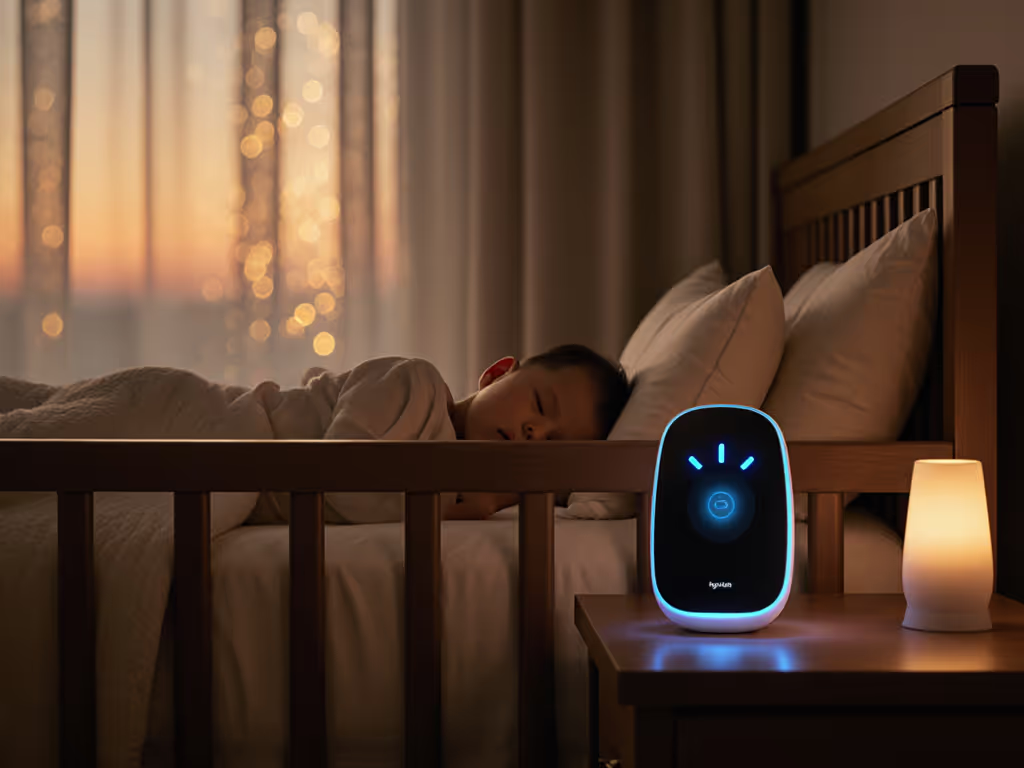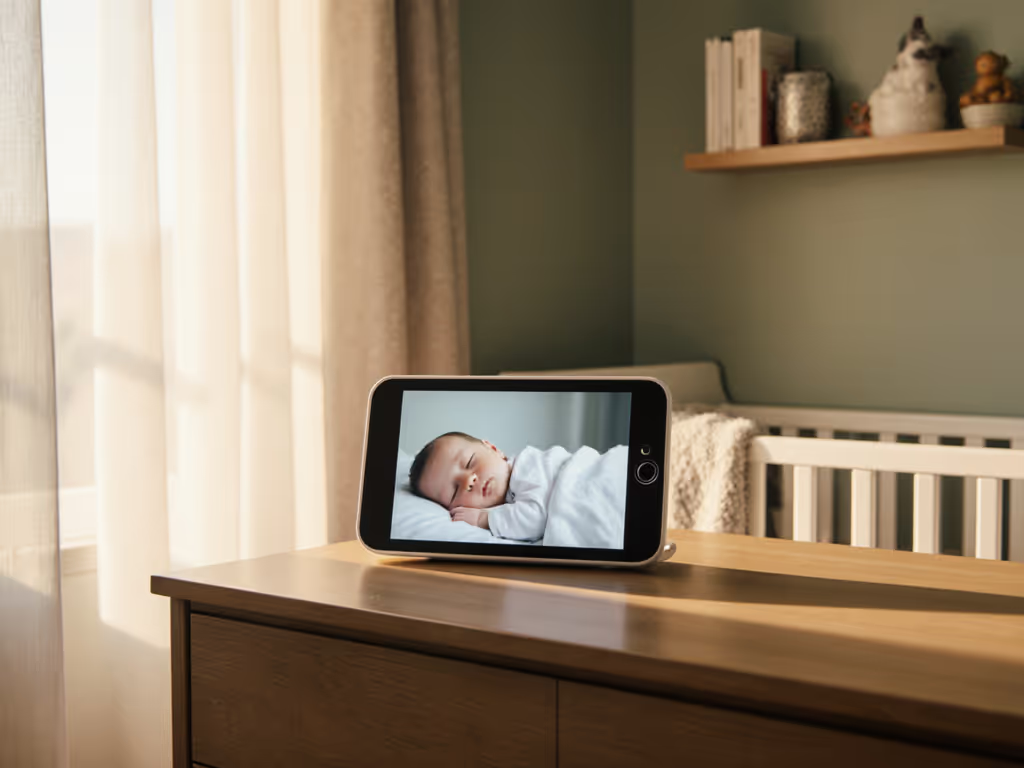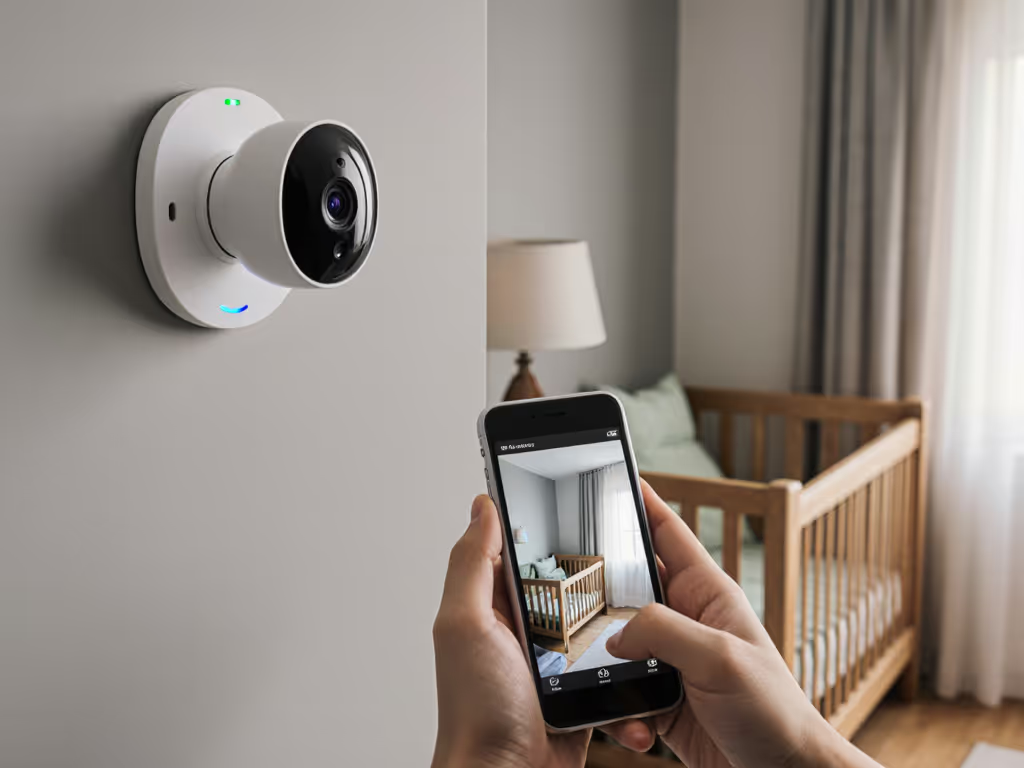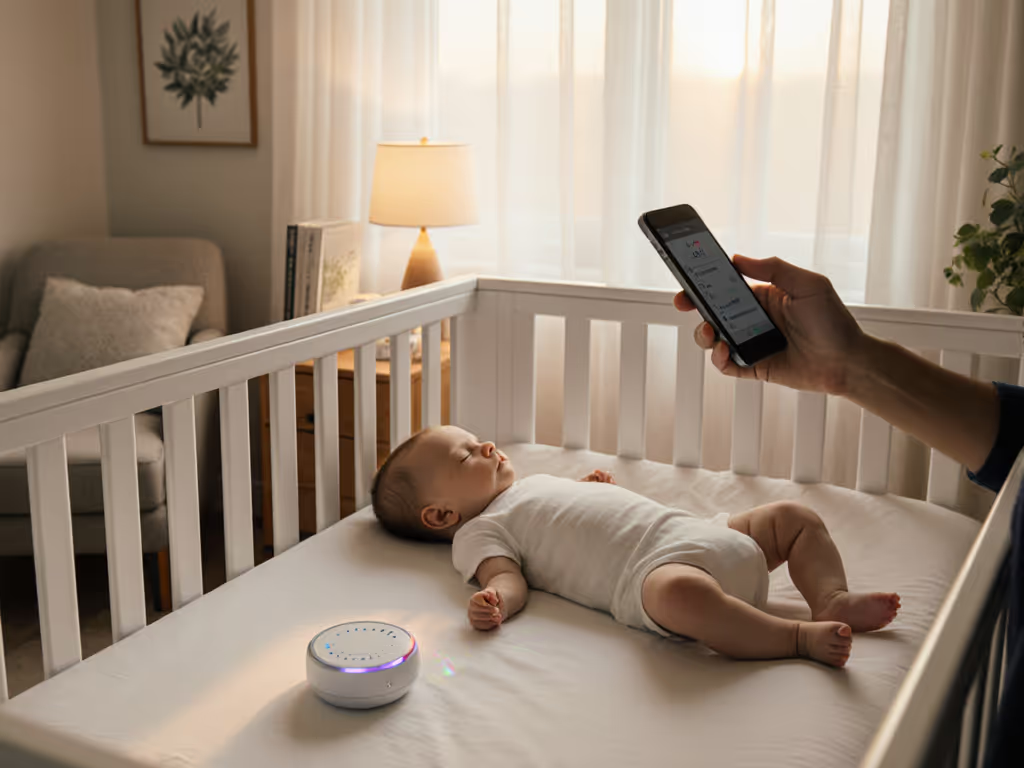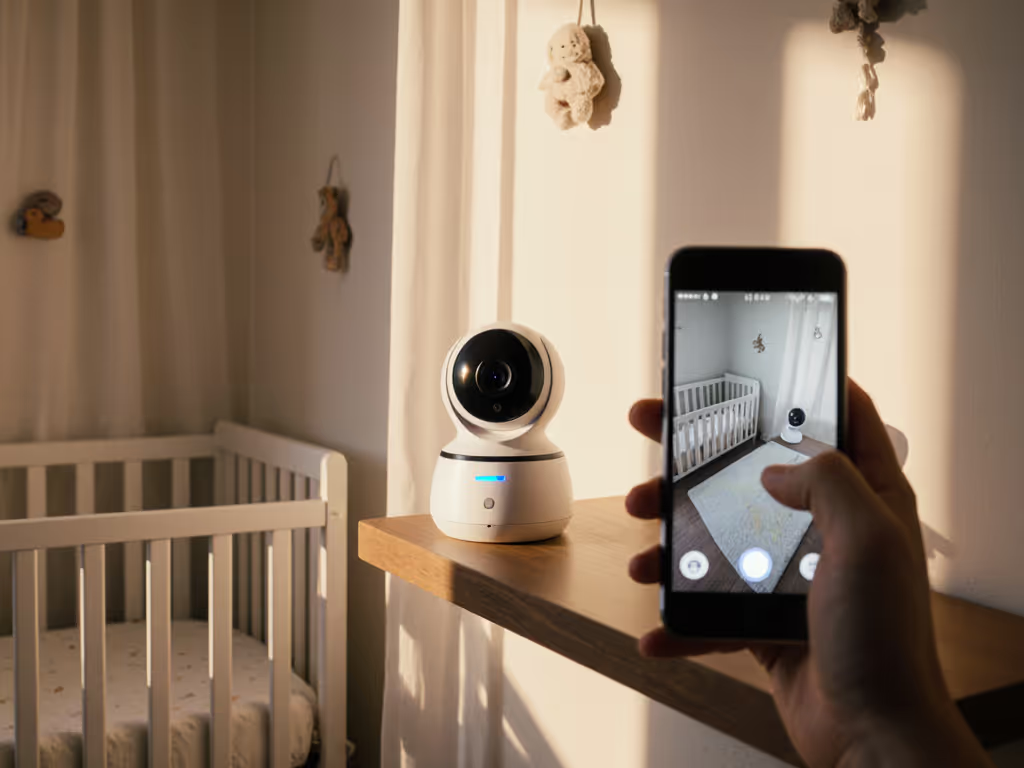
7 Essential Wireless Baby Monitor Options for Parents
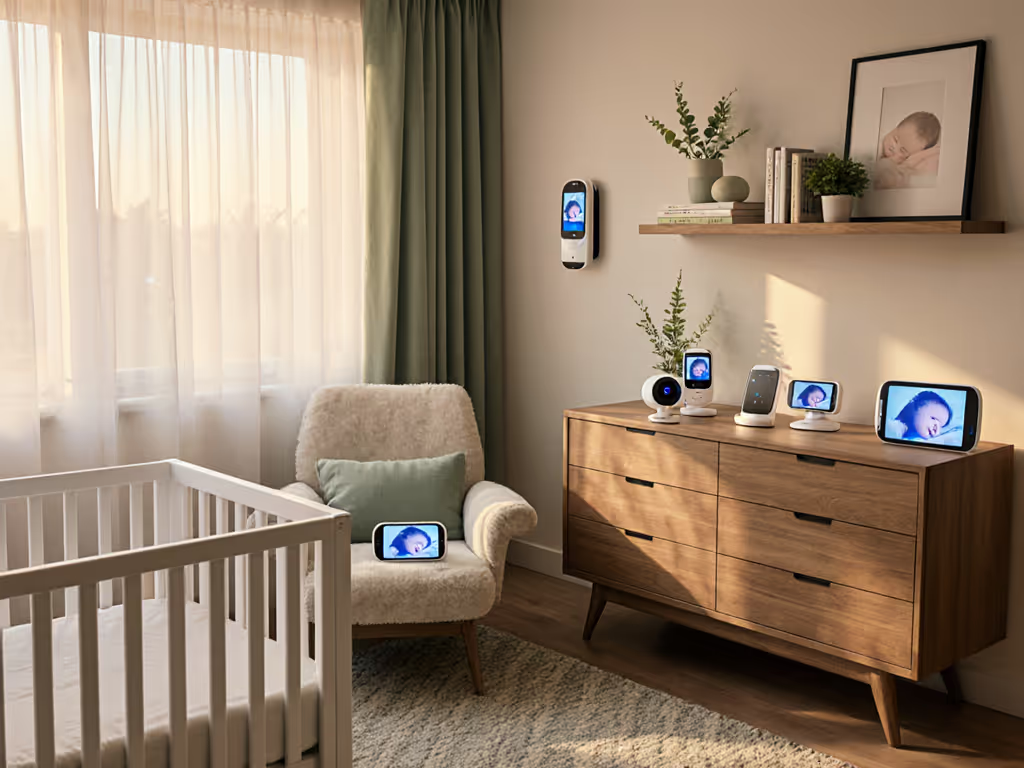
Did you know that nearly 80 percent of parents say baby monitors help them sleep better at night? With so many choices on the market, finding the right model can feel overwhelming. From WiFi to traditional monitors, privacy features, and app usability, small decisions have a big impact on your daily comfort and safety. This guide breaks down the essential factors so you can choose a baby monitor that fits both your family’s needs and your peace of mind.
Quick Summary
| Takeaway | Explanation |
|---|---|
| 1. Choose based on technology comfort | Assess your comfort with technology when deciding between WiFi and non WiFi monitors. |
| 2. Prioritize security features | Look for monitors with encryption and regular updates to protect your family’s privacy. |
| 3. Test signal strength in your home | Conduct a signal strength test in various rooms to ensure consistent monitoring coverage. |
| 4. Consider battery life and power options | Evaluate battery performance, recharge time, and backup options for uninterrupted use. |
| 5. Ensure app usability and setup | Select monitors with user-friendly apps and easy setup processes for hassle-free operation. |
1. Choosing Between WiFi and Non WiFi Baby Monitors
Picking the right baby monitor technology can feel like navigating a complex maze of wireless signals and privacy concerns. Your choice between WiFi and non WiFi monitors will significantly impact your home monitoring strategy and overall peace of mind.
WiFi baby monitors operate through your home internet connection and smartphone app, offering robust features like remote viewing from anywhere. These smart monitors transform your phone into a portable surveillance center, allowing you to check on your little one while at work or running errands. Non WiFi monitors, by contrast, use local radio frequency signals that transmit directly between the camera and receiver without internet dependency.
Key Considerations for WiFi Monitors:
- Require stable home internet connection
- Provide broader range of features
- Allow multiple device access
- Potentially more vulnerable to digital security risks
Key Considerations for Non WiFi Monitors:
- Work independently of internet
- Generally more secure from digital intrusions
- Typically have shorter transmission range
- Less complex technological setup
The fundamental trade off centers on convenience versus privacy. WiFi monitors offer incredible flexibility but demand stronger digital security practices. Non WiFi monitors provide straightforward reliability with minimal technological complexity. Parents seeking maximum control might prefer WiFi options, while those prioritizing simplicity could lean toward traditional radio frequency models.
When making your selection, assess your home network stability, personal comfort with technology, and specific monitoring needs. Some parents prefer hybrid models that offer both WiFi and local transmission capabilities as a balanced approach.
Remember that no single monitor type works perfectly for every household. Your unique family dynamics household layout and personal technological comfort will guide the most appropriate choice.
2. Evaluating Privacy and Security Features
In an era of increasing digital connectivity, protecting your baby monitor from potential security breaches is not just an option it is a parental responsibility. The digital ecosystem surrounding baby monitors has become increasingly sophisticated, demanding a proactive approach to privacy and security.
Digital Privacy Vulnerabilities exist in many modern baby monitors, transforming what seems like an innocent monitoring device into a potential gateway for unauthorized access. Hackers can exploit weak encryption, unsecured WiFi networks, or outdated software to gain visual and audio access to your most private family moments.
Critical Security Checkpoints for Baby Monitors:
- End to end encryption protocols
- Secure login credentials
- Regular firmware updates
- Two factor authentication options
- Manufacturer privacy track record
When evaluating a baby monitor, look beyond surface level features and dig into its security infrastructure. Robust monitoring systems should offer military grade encryption similar to banking applications. This means your video feed remains scrambled and unreadable even if intercepted by malicious actors.
Parents must also consider the manufacturers commitment to ongoing security. Companies that provide regular software patches and actively address potential vulnerabilities demonstrate a genuine commitment to user protection. Think of these updates like routine maintenance for your digital guardian.
Practical steps include creating strong unique passwords, using separate networks for smart devices, and periodically reviewing device settings. Some advanced monitors now offer additional layers of protection like automatic logout features and IP address filtering.
Remember that privacy is not a one time setup but an ongoing process. Your vigilance transforms a potential security risk into a reliable parental ally. Choose monitors that treat your family data with the same level of protection you would expect from your most secure personal accounts.
3. Exploring Two Way Audio and Video Quality
Two way audio and video represent the heartbeat of modern baby monitoring technology transforming passive observation into interactive communication. This feature goes far beyond simply watching your child it enables real time connection and intervention when needed.
Video Quality Fundamentals are critical in selecting an effective baby monitor. High resolution cameras with night vision capabilities allow you to see crystal clear images in varying light conditions. Think of these as your personal guardian eyes watching over your sleeping infant even in complete darkness.
Key Video Performance Metrics:
- Resolution clarity (720p vs 1080p)
- Night vision range
- Field of view coverage
- Low light performance
- Frame rate stability
Two way audio takes monitoring to another level by allowing parents to speak directly to their child through the monitor. Imagine soothing your baby with your voice during a mild fuss without physically entering the room. Audio transmission quality becomes paramount ensuring your message arrives clear and comforting.
Audio Transmission Considerations:
- Sound clarity
- Noise reduction technology
- Microphone sensitivity
- Volume control ranges
- Signal interference prevention
Advanced monitors now feature intelligent audio algorithms that can distinguish between normal infant sounds and urgent cries. Some systems automatically alert parents during significant acoustic events creating an additional layer of monitoring intelligence.
Practical selection means testing monitors in multiple room scenarios. A great monitor should provide consistent performance across different home layouts maintaining strong visual and audio signals. Wireless range and signal strength become crucial factors in maintaining uninterrupted monitoring.
Remember that technology serves connection. The right two way audio and video system bridges physical distance creating a seamless protective communication channel between you and your child.
4. Assessing Range and Signal Strength in Your Home
Your baby monitor is only as good as its ability to maintain a consistent connection throughout your living space. Signal range and strength determine whether you can confidently move around your home while staying connected to your child.
Signal Performance depends on multiple environmental factors that can dramatically impact monitoring effectiveness. Walls construction materials electronic interference and home layout all play significant roles in determining how reliably your monitor transmits audio and video signals.
Factors Affecting Signal Transmission:
- Home construction materials
- Number of walls between camera and receiver
- Presence of electronic devices
- WiFi network congestion
- Physical home square footage
WiFi based monitors typically offer broader range but can suffer from network interference. Traditional radio frequency monitors provide more consistent local signals but with more limited distance coverage. Understanding your home topology becomes crucial in selecting the right monitoring solution.
Practical assessment means conducting a thorough home signal test. Walk through different rooms testing monitor connection strength and identifying potential dead zones. Some parents strategically place signal repeaters or choose monitors with mesh network capabilities to extend monitoring range.
Modern monitors now include intelligent signal management technologies that automatically switch transmission channels to maintain strongest possible connection. These adaptive systems work like digital signal bodyguards constantly protecting your monitoring integrity.
Consider your specific home environment. Large multilevel homes with thick walls require different monitoring strategies compared to compact apartments. Signal strength is not universal it is uniquely tailored to your living space.
Remember that a reliable monitor creates peace of mind. Your goal is consistent uninterrupted monitoring that allows you to feel secure no matter where you are in your home.
5. Considering Battery Life and Power Options
Battery performance can make or break your baby monitoring experience transforming a promising device into a frustrating tech headache. Understanding power management becomes crucial in selecting a reliable monitoring system that keeps you connected without constant recharging.
Battery Technology Insights reveal that modern baby monitors offer diverse power solutions ranging from rechargeable lithium ion units to traditional plug in models. Your specific lifestyle and home setup will determine the most suitable power strategy.
Battery Performance Factors:
- Actual continuous monitoring time
- Recharge duration
- Backup power options
- Battery degradation rate
- Power consumption during different modes
WiFi enabled monitors typically consume more power compared to traditional radio frequency models. Smart parents develop a strategic approach combining multiple power sources. This might mean having backup batteries charged and ready or selecting monitors with simultaneous charging and monitoring capabilities.
Portable parent units require special attention. Look for devices offering quick charge technologies that provide substantial runtime with minimal charging time. Some advanced monitors now include intelligent battery management systems that optimize power consumption based on usage patterns.
Practical power management involves creating a charging routine. Place charging stations in convenient locations ensuring your monitoring devices are always ready. Consider monitors with USB charging options for maximum flexibility across different power adapters and locations.
Some monitors now integrate power saving modes automatically reducing screen brightness or switching to audio only transmission when battery levels become low. These intelligent features act like digital power guardians protecting your monitoring capabilities.
Remember that consistent power equals consistent monitoring. Your ideal baby monitor should offer reliable performance without constant worry about battery depletion or unexpected shutdowns.
6. Using Noise Alerts and Smart Monitoring Features
Smart baby monitors have revolutionized parental monitoring by transforming passive observation into intelligent alert systems. Advanced noise detection technologies now provide unprecedented insights into your child's environment and potential needs.
Smart Monitoring Intelligence goes beyond traditional audio transmission. Modern monitors use sophisticated algorithms to distinguish between routine infant sounds and urgent cry patterns. These systems act like digital guardians analyzing acoustic environments with remarkable precision.
Key Noise Alert Capabilities:
- Cry detection sensitivity levels
- Sound pattern recognition
- Ambient noise filtering
- Customizable alert thresholds
- Background sound analysis
Intelligent monitors can now recognize different emotional states through acoustic signatures. A whimper might trigger a gentle alert while a distressed cry generates an immediate notification. This nuanced approach helps parents respond more effectively without constant screen watching.
Some advanced monitors integrate machine learning technologies that adapt to your specific infant's sound patterns over time. Personalized monitoring means the system becomes more accurate in understanding your individual child's communication style.
Practical implementation involves careful calibration. Most smart monitors allow parents to adjust sensitivity settings preventing false alarms while ensuring critical sounds are never missed. Consider testing different alert configurations to find your optimal monitoring balance.
Beyond audio signals some monitors now incorporate movement tracking and breathing monitoring. These comprehensive systems transform baby monitoring from a simple communication tool into a holistic health tracking platform.
Remember that technology serves connection. Smart monitoring features are designed to provide peace of mind without replacing parental intuition and direct care.
7. Comparing Setup Ease and App Usability
Navigating baby monitor technology can feel like decoding a complex puzzle especially for sleep deprived new parents. The right monitor should simplify your life not add another layer of technological complexity.
App Interface Fundamentals determine how seamlessly you can integrate monitoring into your daily routine. A well designed app transforms your smartphone into an intuitive parental command center providing real time insights without overwhelming technical barriers.
Critical App Usability Factors:
- Intuitive navigation
- Quick connection speeds
- Minimal setup requirements
- Cross platform compatibility
- User friendly configuration
Modern baby monitor apps now feature streamlined onboarding processes. Some systems offer step by step visual guides walking parents through camera placement network configuration and initial setup. Intelligent design means reducing friction between unpacking your device and achieving full monitoring capabilities.
Consider the ecosystem compatibility of your chosen monitor. Parents using multiple devices appreciate apps that synchronize across smartphones tablets and computers. Look for systems offering flexible access modes that allow multiple family members or caregivers to monitor simultaneously.
Setup complexity varies dramatically between different monitor models. WiFi enabled monitors might require more initial configuration compared to traditional radio frequency systems. Advanced users might appreciate deeper customization options while novice parents prioritize plug and play simplicity.
Some monitors now include augmented reality features helping users identify optimal camera placement during initial setup. These intelligent guidance systems act like personal installation assistants ensuring maximum monitoring coverage.
Remember that technology should empower not intimidate. The ideal baby monitor app feels like a natural extension of your parenting toolkit providing information and peace of mind with minimal cognitive overhead.
Below is a comprehensive table summarizing the main considerations and features of baby monitors as discussed throughout the article.
| Aspect | WiFi Baby Monitors | Non WiFi Baby Monitors |
|---|---|---|
| Connectivity | Requires stable internet; accessible via smartphone | Uses local radio frequency; internet independent |
| Security | Vulnerable to digital security risks; requires strong security practices | More secure from digital intrusions; simpler setup |
| Features | Remote access, multiple device viewing, advanced alerts | Basic monitoring functions |
| Range | Broader range affected by WiFi network quality | Limited range, affected less by network interference |
| Signal Strength | Depends on network congestion and physical barriers | Consistent but limited to shorter distances |
| Battery and Power Options | Higher power consumption, needs strategic charging setup | Often has longer battery life, simpler power management |
| Setup and App Usability | May involve complex initial setup; enhanced app features | Usually easier setup with basic functionality |
| Smart Features | Advanced noise detection and alerts; two way communication | Basic sound and video monitoring |
| Best For | Tech-savvy users needing flexibility and advanced features | Users seeking simplicity and security without internet control |
Find the Right Wireless Baby Monitor Solution for Your Family
Choosing a baby monitor is more than a technical decision—it is about your peace of mind and your child’s security. If you are sorting through critical choices like WiFi versus non WiFi models, or weighing privacy concerns against convenience, you are not alone. Many parents struggle with finding secure, easy-to-use monitors that actually fit their home layout and protect their family's privacy. Features like two way audio, reliable battery life, and strong signal strength can make all the difference, but only if you have accurate information tailored to your real needs and concerns.
Uncover the facts you need to make a confident choice. Visit Baby Monitors for Parents Pro for expert reviews, practical setup guides, and privacy-focused comparisons. Explore insights on top devices in our in-depth product reviews and discover what matters most for your family's safety and comfort. Take control of your monitoring experience today. Get ready to make a decision you can trust—start now at https://babymonitorsforparents.pro.
Frequently Asked Questions
What are the advantages of using WiFi baby monitors over non-WiFi options?
WiFi baby monitors offer robust features like remote viewing and the ability to connect multiple devices at once. To fully utilize these benefits, ensure your home internet connection is stable and secure, thus maximizing the convenience of monitoring from anywhere.
How can I improve the signal strength of my baby monitor?
To enhance your baby monitor's signal strength, minimize interference by ensuring it has a clear line of sight to the receiver and positioning it away from electronic devices. Consider conducting a home signal test to identify any dead zones and adjust the camera placement accordingly.
What security features should I look for in a wireless baby monitor?
Prioritize baby monitors with end-to-end encryption, secure login options, and regular firmware updates to safeguard your family's privacy. Implement strong, unique passwords immediately after setting up the device and check for updates regularly to maintain security over time.
How do I choose the right baby monitor based on my home layout?
Examine your home layout to determine how many walls and electronic devices might affect signal transmission. Test baby monitors in various rooms during setup to ensure consistent performance, making adjustments as necessary based on the monitor's range and your home's construction materials.
What power options should I consider for my wireless baby monitor?
Evaluate the power options available, such as rechargeable batteries versus plug-in models, to find what best fits your lifestyle. Prepare by establishing a charging routine, ensuring that your monitor is ready to use whenever needed, even during extended monitoring periods.
How can noise alerts help me monitor my baby effectively?
Noise alerts are designed to distinguish between regular sounds and urgent cries, enabling timely responses to your child's needs. Customize the sensitivity settings within your monitor's app to tailor alert thresholds to your preferences and ensure you're not overwhelmed by false alarms.

